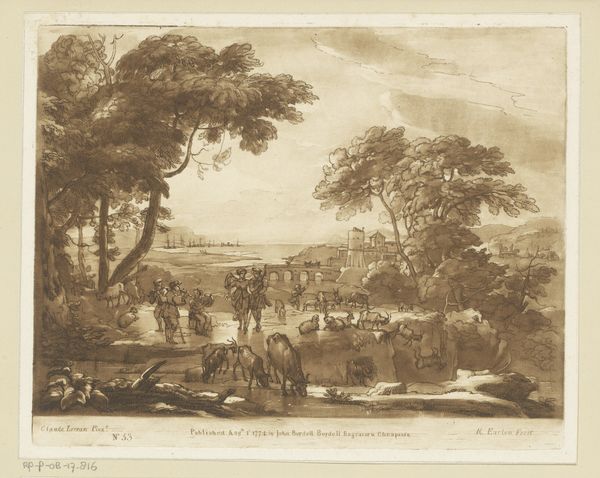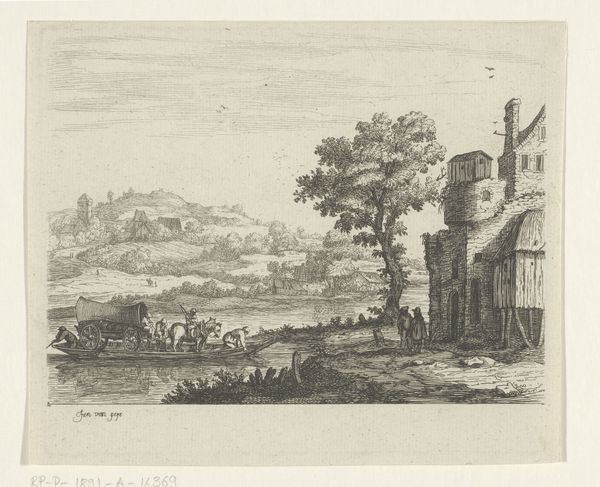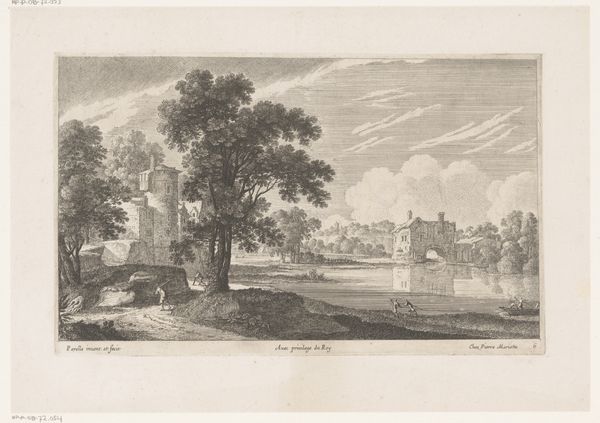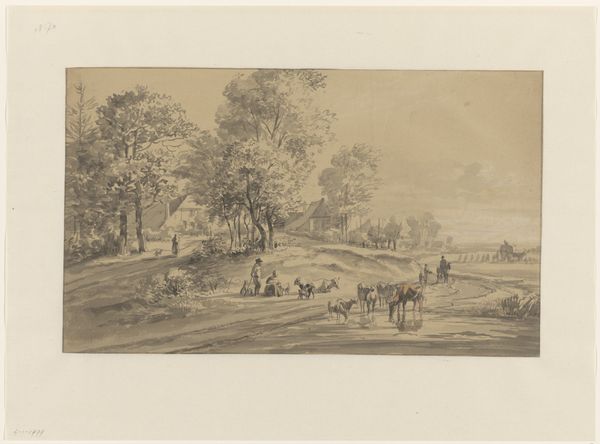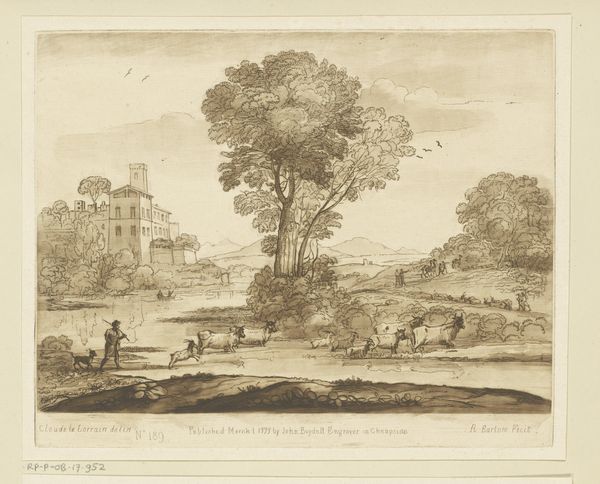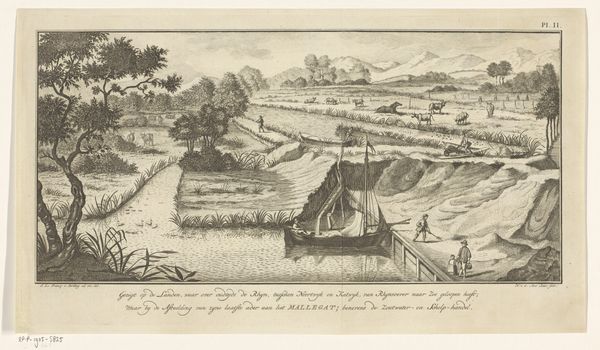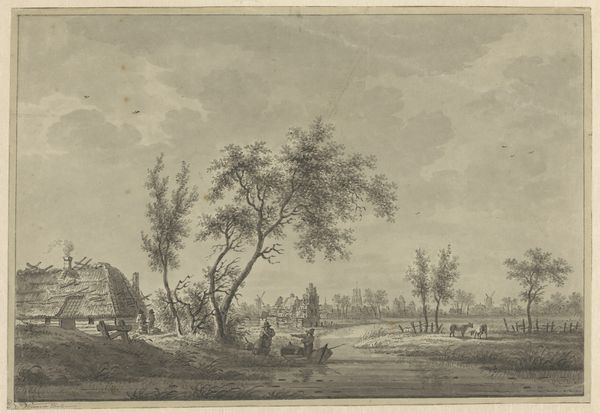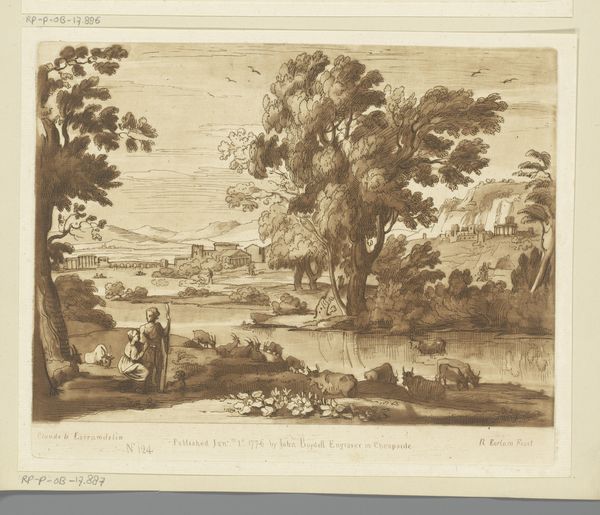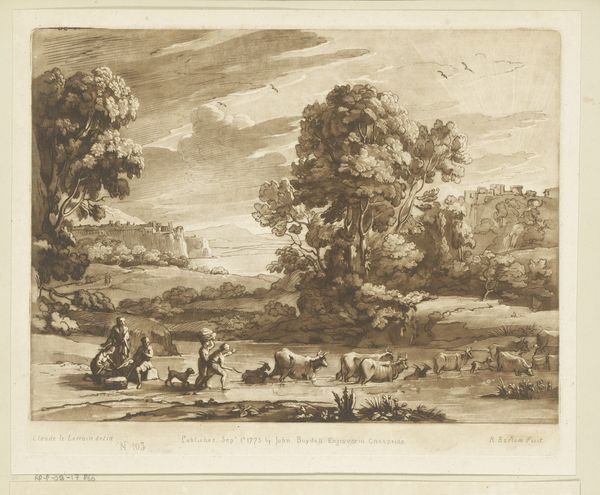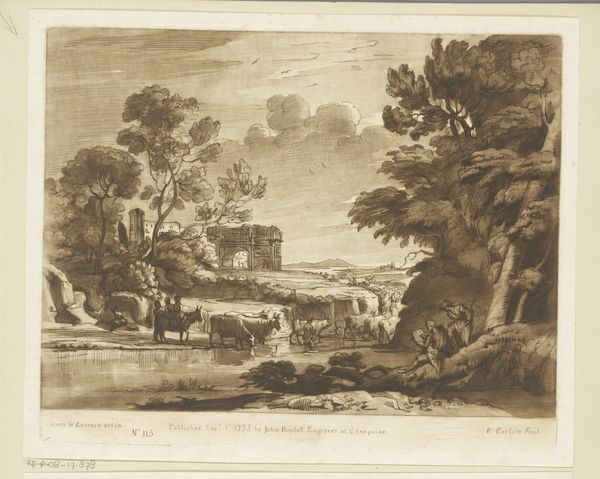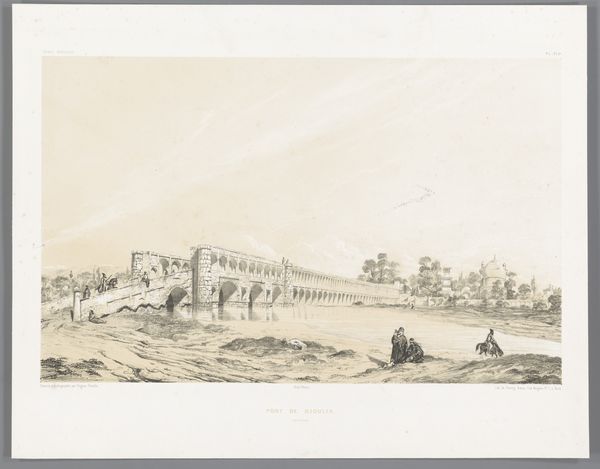
drawing, lithograph, print, paper
#
drawing
#
neoclacissism
#
lithograph
# print
#
landscape
#
classical-realism
#
paper
#
history-painting
Dimensions: 467 × 630 mm (image); 569 × 772 mm (sheet)
Copyright: Public Domain
Curator: Friedrich von Gärtner created this lithograph in 1819. It's titled "Ruins of the Temple of Jupiter at Agrigente," and it’s currently held at The Art Institute of Chicago. Editor: My first impression is one of serene melancholy. The warm sepia tones create a wistful atmosphere, emphasizing the decay of what must have once been a magnificent structure. Curator: Precisely. Von Gärtner was deeply interested in classical antiquity. The print exemplifies the era’s fascination with history, particularly the grandeur of the Roman Empire and its impact on society and architecture. Editor: Absolutely. The ruins themselves dominate the foreground, but it’s the contrast of the ordered architecture against the wild, overgrown vegetation that draws me in. Look at the textures! The smooth, colossal drums of the fallen columns juxtaposed against the roughness of the existing wall, creating visual interest throughout the work. Curator: The work’s purpose wasn't merely aesthetic. Prints such as these served as a critical mode for circulating knowledge in the 19th century, disseminating Neoclassical ideals, and shaping architectural tastes among a wider audience. Von Gärtner wasn’t just depicting ruins; he was offering a meditation on civilization and the passage of time. Editor: Yes, and look how the figures on horseback are positioned, receding into the midground and drawing the viewer's eye towards the distant architectural forms. The artist skillfully uses linear perspective and tonal variation to establish a clear sense of spatial depth. It’s more than documentation; it's pictorial storytelling. Curator: Consider, too, the symbolic weight of Jupiter's temple—once a center of power and belief, now reduced to fragments. The crumbling stones remind us of the transience of empires and the inevitability of change. Editor: For me, it's the exquisite balance that holds the most appeal. The interplay of light and shadow across the architectural forms enhances the emotional impact, turning historical artifact into pure emotion through its aesthetic construction. Curator: Seeing the work this way certainly encourages reflection on how art preserves not only remnants of the past, but also how those preservations impact the present. Editor: I agree. This print encapsulates how visual elements work together to transcend mere representation. The tone, the texture, and form, come together to reveal a great monument diminished, rendered in poignant and evocative imagery.
Comments
No comments
Be the first to comment and join the conversation on the ultimate creative platform.

